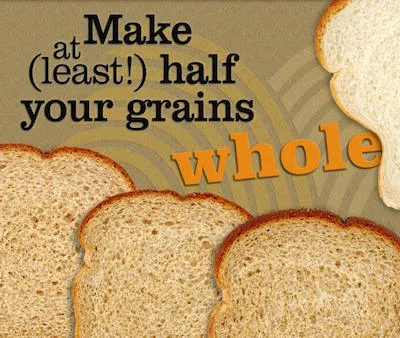
Packed with fiber, protein, vitamins, antioxidants and minerals, whole grains offer amazing nutritional benefits. Studies show that a diet rich in whole grains can lower your risk of chronic diseases such as heart disease, diabetes, and even cancer. A grain is considered whole when it contains bran, germ, and endosperm in its natural proportions. Some examples include:
- Barley
- Brown Rice
- Buckwheat
- Bulgur (cracked wheat)
- Millet
- Oatmeal
- Popcorn
- Quinoa
- Whole Wheat bread, pasta, or crackers
- Wild Rice
Refined grains — such as white rice, white flour and white bread — are milled, a process which removes the bran and germ to extend shelf life and improve texture. Unfortunately, this refining process also “strips away more than half of wheat’s B vitamins, 90 percent of the vitamin E, and virtually all of the fiber” ( Harvard School of Public Health ). The Dietary Guidelines for Americans recommends that at least half the grains you eat are whole. So, how can you incorporate those healthy whole grains into your diet?
5 Easy Ways to Choose Whole Grains
- Start your day off with whole grains by eating oatmeal or buckwheat pancakes for breakfast.
- Add quinoa or wheat berries to your salads.
- Cook soups with barley or soba noodles.
- Snack on popcorn. It’s a whole grain and can be a healthy snack if you cut back on added salt and butter.
- Making a sandwich? Build it on a whole grain pita or slices of sprouted grain bread.
